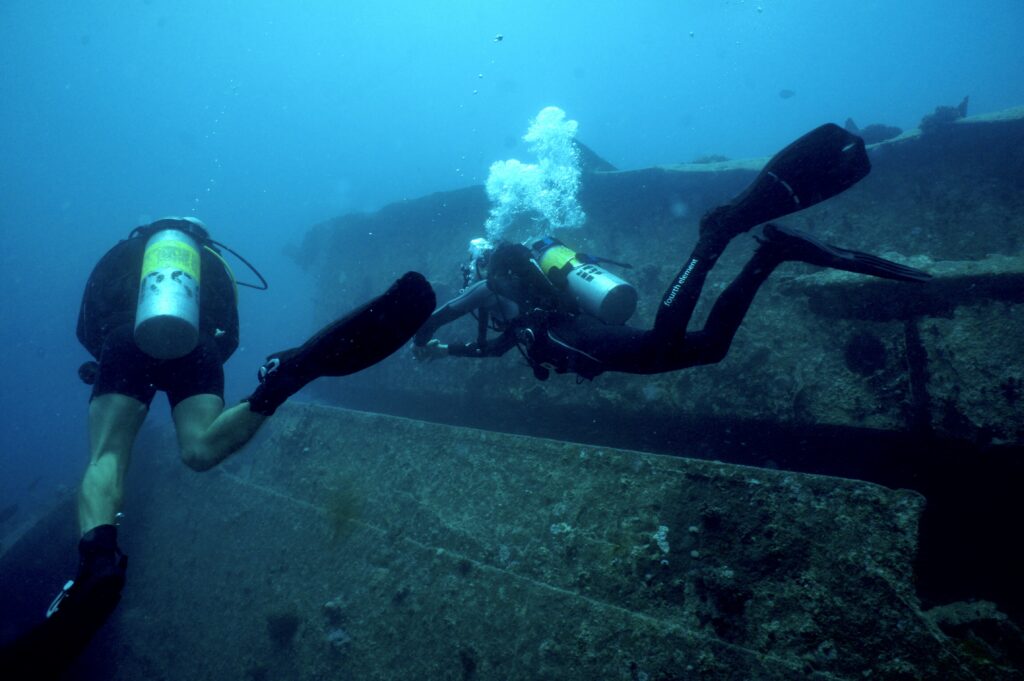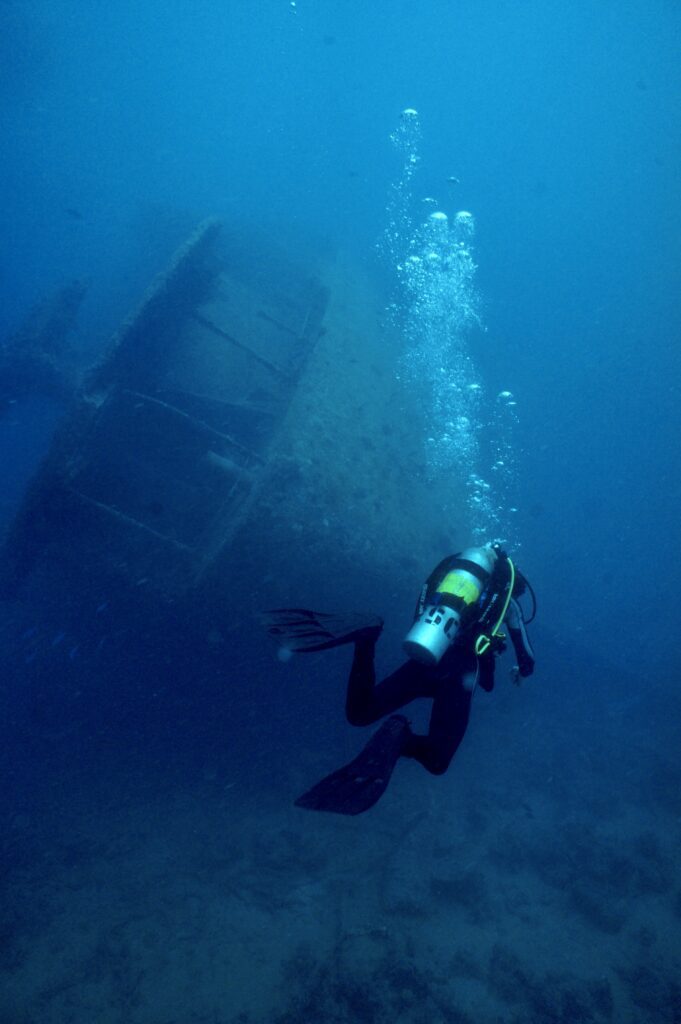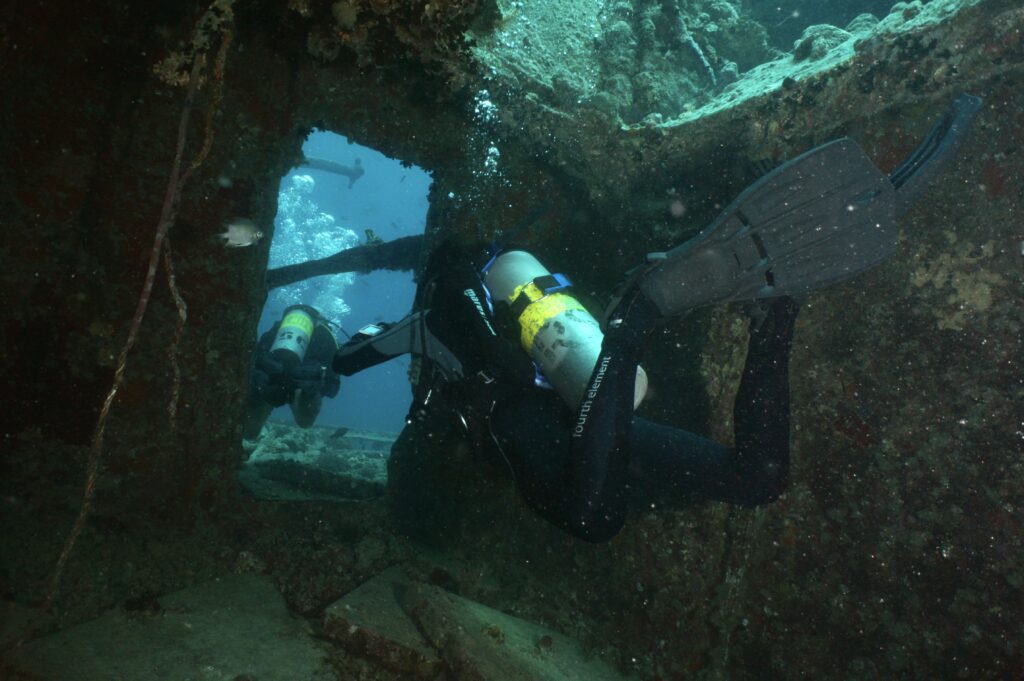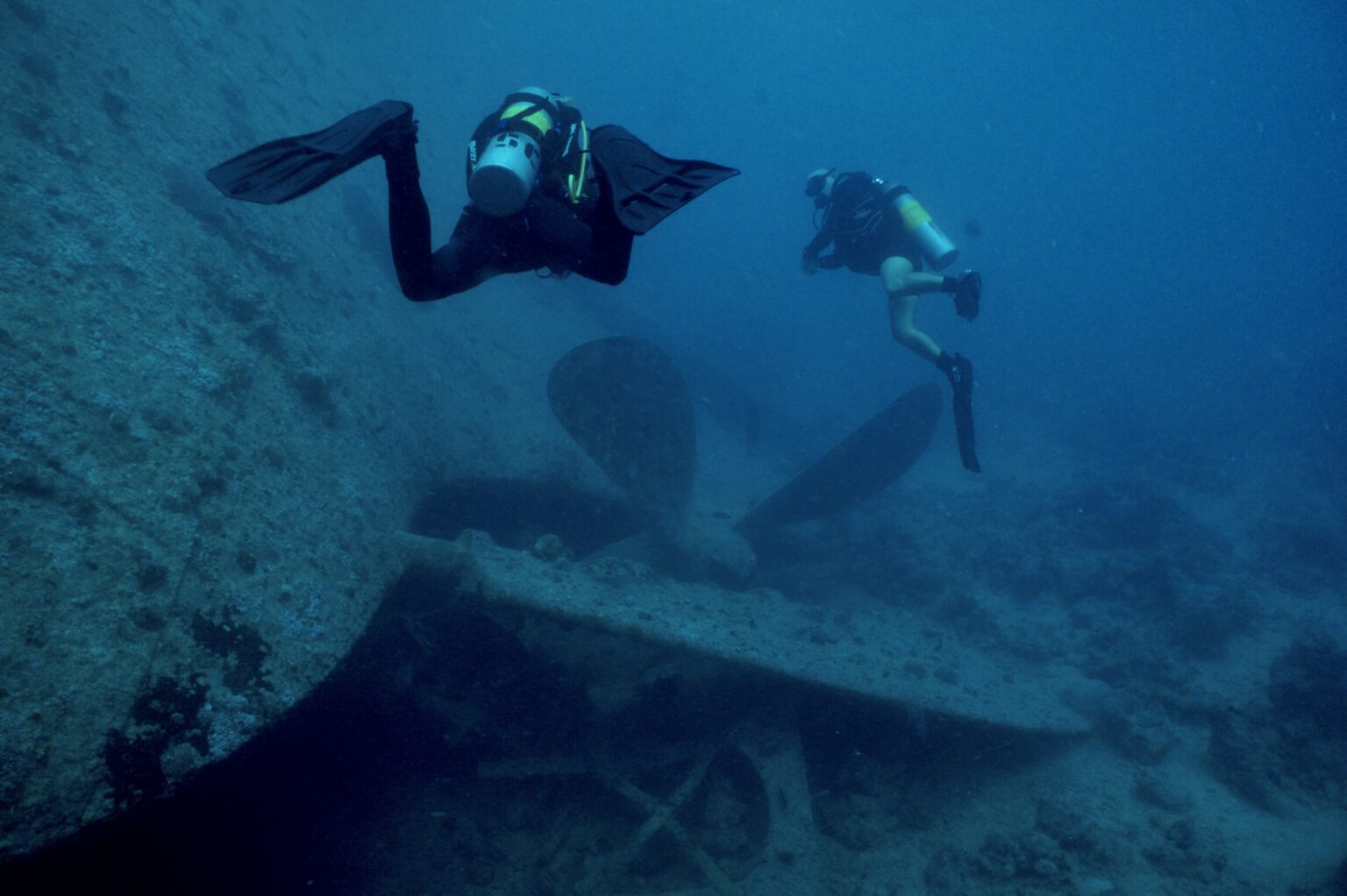Continuing our series in conjunction with scuba.com – your one-stop-shop in North America for dive gear, snorkelling equipment, general watersports kit and much more, with a huge online presence and stores in New York City and Costa Mesa, CA – we've teamed up to compile a helpful guide to the differences between air and nitrox. Read on as Rianne Poesse provides some useful information.
Nitrox! You might have heard it mentioned on a dive trip before, or maybe even had divers recommend it to you. But what exactly is nitrox, and why should you consider diving with it? It’s a good question, and to answer it, we need to first look at the science behind diving with air.

Everything about the air you breathe
When we first learn to dive, we learn to dive with cylinders that are filled with regular air. Air that exists roughly of 21% oxygen and 79% nitrogen. That’s the same composition as the air we breathe in our everyday lives. Air technically contains a few more gasses, but so minimal (1%) and irrelevant in this case that we’ll focus only on the oxygen and nitrogen levels.
When you breathe in air, your lungs use the oxygen to fuel the cells in your body. Oxygen has a real use to your body and in fact as we all know, without it we will die. Having said that, too much oxygen on the other hand can lead to something that we call ‘oxygen toxicity'. Considering the 21% oxygen that we breathe in; we breathe out approximately 15-18%. The rest of the oxygen is consumed by our body.
Oxygen has a purpose to our body; nitrogen does not. All the nitrogen that we breathe in, we breathe out. It has no use to us. However, gathering too much nitrogen in our body can be dangerous and cause Decompression Sickness. This is a diving illness that occurs when too much nitrogen has built up in the body and can cause anything from joint pains to neurological damage.

What happens to air when scuba diving
When we breathe in air underwater — meaning when we’re under pressure — we breathe in more litres of air than we would on the surface. The reason for this is, air underwater gets compressed. If you go 10m deep, the air gets compressed into half the size (1/2) it originally was. So, if you use normally 12 litres of air per minute, at 10m depth this would be double (x2) i.e. 24 litres of air. If you go 20m deep, the air gets compressed to one third (1/3) the size which will result in a use of 36 litres (x3) of air and so on.
The more litres of air you breathe in, the more oxygen and nitrogen that enters your body. The deeper you go, the quicker the build up of oxygen and nitrogen and this is where you have to start paying attention – especially when considering diving with nitrox.
There’s more oxygen in nitrox
The big difference between nitrox and air is that there is more oxygen and less nitrogen in nitrox. Most nitrox mixes contain anywhere from 28% to 36% oxygen and only 64% to 72% nitrogen. This makes nitrox a desired gas to dive with as there is a lesser build up of nitrogen in your body, allowing you to dive longer. For example, if you dive with a nitrox mix containing 36% nitrox, you could remain approximately 20 minutes longer at 30m or even an hour longer at 18m. Nitrox can really extend your dive time. On top of that, even though not scientifically proven, divers have reported to feel less tired after diving on nitrox.
Being able to do longer dives or multiple dives a day are the two most common reasons for divers to dive with nitrox. Being able to dive deeper, however, is absolutely not one of the reasons to dive with nitrox. The reason for this is because nitrox contains more oxygen, you will reach your level of oxygen toxicity sooner. As oxygen toxicity is a very real threat when diving with nitrox and diving deep, its important that you know how to analyze your nitrox tanks and calculate your maximum depth.

Take a nitrox course and become a certified nitrox diver
When it comes down to diving with nitrox there are benefits, if you know what you’re doing. We understand that this brief introduction could have been a lot to take in, especially if this is the first time you investigate nitrox. However, by taking a nitrox course you’ll learn everything you need to know about diving with nitrox. You’ll be able to calculate your maximum depth, analyze how much oxygen there is in your dive cylinder and configure your dive computer to nitrox settings. Once certified, you can dive anywhere in the world with nitrox safely, if it’s available.








